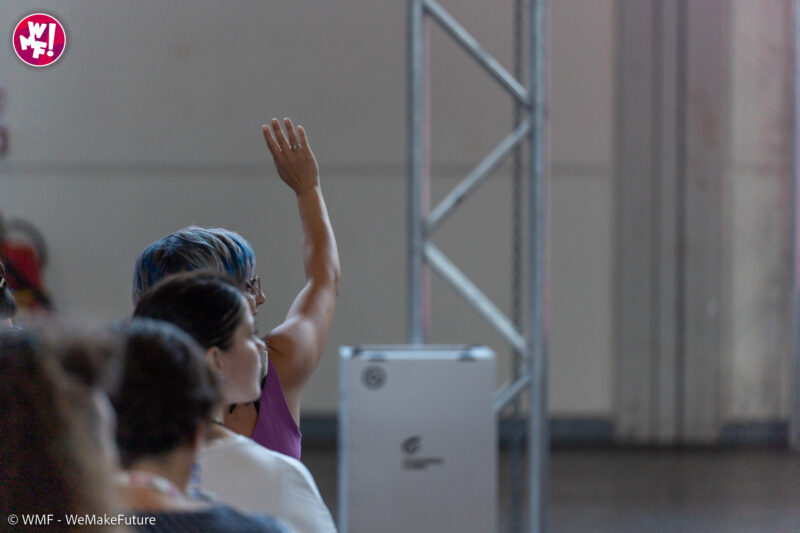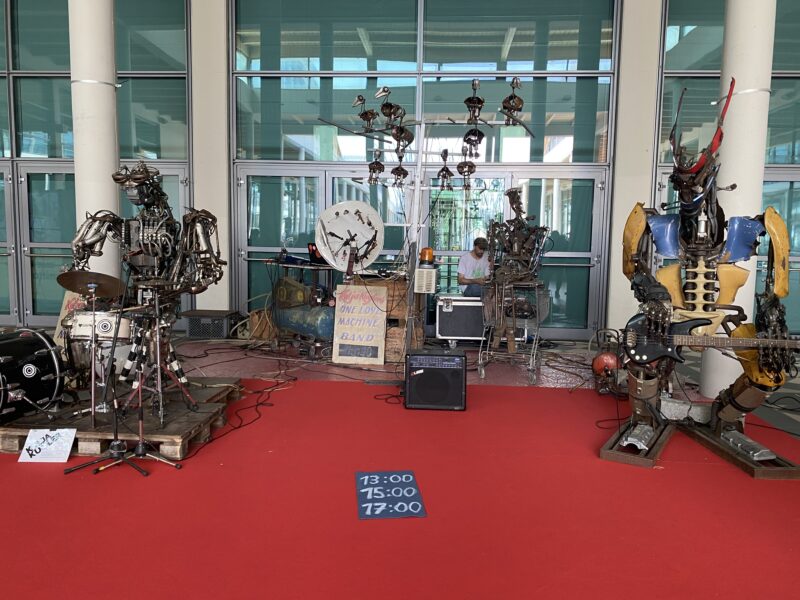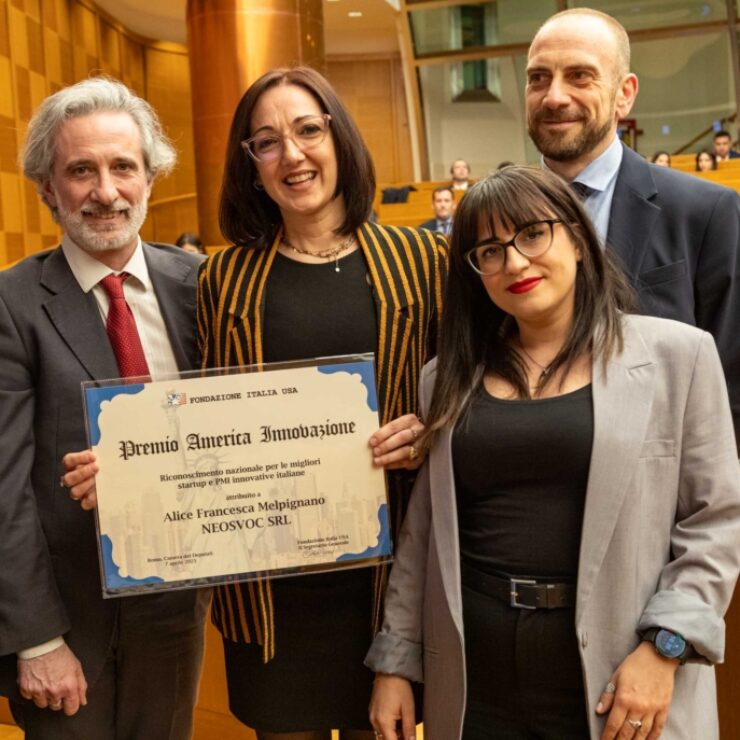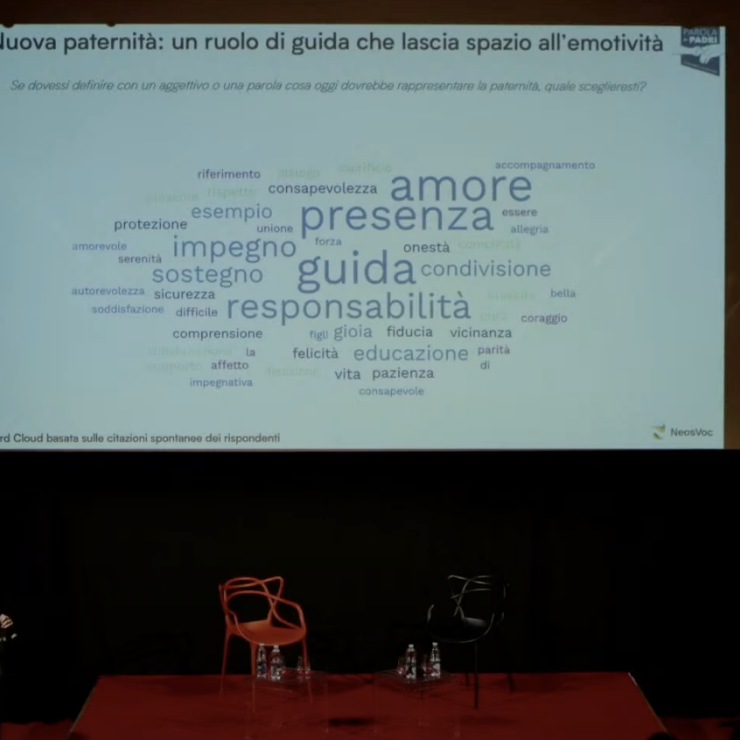This is the final chapter of our ‘Conscious or Consumerist?’ story, the investigation conducted during the Web Marketing Festival 2022: a live demo of NeosVoc where we engaged with the event audience (mainly comprised of marketers and communicators) using our Green Potential Detection Model. This model helps us understand how people are oriented towards sustainability based on their personality traits and behaviors.
The first episode focused on the Green Potential Detection Model and the overall results of the Rimini survey. In the second, we explored the world of psychographic traits and propensity towards sustainable behaviors. In the third episode, we observed a curious phenomenon related to the age of respondents, which intrigued us and brought forth interesting themes.

The specifics of our sample, predominantly composed of marketers and communicators (see details on the sample in the first episode), provided a valuable opportunity to compare individuals and professionals. These professionals increasingly engage with sustainability issues, playing a crucial role: convincing, educating, and sometimes persuading.
We know that in this line of work, we cannot always believe in the things we are offering to the public. However, in this case, the situation is unique. Respect for the environment is not a product, sustainability is not just a trend. But it is not guaranteed that those who work in this field truly believe in it, just as if we were talking about any other product or trend.
“Conscious or Consumerist?” has provided us with many insights to reflect upon. And not just on an academic level, but also in practical terms.
To briefly summarize what has emerged:
- The audience we engaged with has an Environmental Awareness Index that struggles to reach sufficiency: marketers and communicators need to increase their environmental sensitivity and propensity towards sustainability;
- Our sensitivity to environmental issues has roots in the traits of our personality: in some way, there are individuals more predisposed than others to adopt sustainable behaviors. However, in some situations, traits indicating a good propensity do not correspond to equally virtuous behaviors. And vice versa;
- Younger individuals exhibit traits more inclined towards sustainability, but the most sustainable behaviors come from older individuals.
Sustainability is not the same for everyone
Sustainability doesn’t have a single face. Depending on where one stands, different aspects of it are perceived. This implies that everyone forms their own understanding of it.
Firstly, there’s a generational theme. For instance, we observed that younger individuals — not exactly the ‘Greta generation’ in our case, but their older siblings — approach the issue with lofty ideals that are not necessarily shared by older generations. However, when we consider the ‘conscious’ behaviors exhibited by the latter, we can find many sources: a sense of responsibility stemming from life experiences, and perhaps echoes of an upbringing where grandmothers reminded us to turn off the lights when leaving a room.
There’s also a theme of self-perception. Feeling like a cog in a complex mechanism is different from feeling like a visitor to the factory. The cog is involved, the visitor is not. This holds true regardless of whether one is a professional (someone who must guide others toward a certain mindset). Self-perception encompasses the issue of cognitive dissonance reduction: being seen as a ‘good person’ drives one to be a cog among the older generation; the need to balance the books forces the younger generation to be visitors (full of good intentions).
Lastly, there’s an educational theme. It’s about experience, context, and culture. It’s about the family one grew up in, the people one interacted with, the environments where one was raised. All these factors have set the bar for environmental sensitivity at a certain level and continue to influence the possibility of raising that bar over time.
Therefore, the first step in addressing sustainability is to acknowledge this: while the behaviors we aim to promote may be the same for everyone, we certainly cannot use the same strategy for all.

The role of companies
And the institutions?
Does this mean cutting out institutions? Certainly not, although here the discussion becomes decidedly more complex, especially in the current moment.
With a recent water crisis and an ongoing energy crisis engulfing us, it is no longer feasible for environmental issues to be entrusted solely to individual initiative. And when it becomes a collective issue for institutions, it will also be time to mobilize communicators to convey it to the public.
And these communicators will need to be skilled. If they also believed in it, that would be perfect.
To communicate sustainability
If those who communicate exhibit the shortcomings we observed in our sample – we cannot generalize, but the data is nonetheless singular and interesting – the breadth and variety of the audience outside this bubble lead us to believe that the situation is no better beyond the doors of the Rimini event. Therefore, this audience must be understood and never considered homogeneous for a moment.
In this regard, psychographic profiling is a valuable tool to thoroughly understand who we are addressing and how best to speak to them. Identifying traits and behaviors, as we have seen, is essential to construct sustainability messages effectively.
By personalizing communication as much as possible, knowing that sensitivities vary.
But what does personalization mean? Let’s try to give an example. We know there are people with a keen sensitivity to environmental issues – whose significant traits are universalism and conscientiousness. These individuals will be engaged by a narrative based on values they recognize: responsibility, vision of the future, belonging to a group (which in this case is humanity as a whole).
Then there are those characterized by traits like assertiveness and extraversion. Here, the narrative will be entirely different because it needs to focus on themes such as social recognition, status, and the role of protagonist that each must fulfill in this task.
Communicating in a personalized manner is always valuable. Any product or service can only benefit from narratives tailored to different audiences. However, our topic is specific and therefore requires a bit more attention.
To train those who need to speak about sustainability to others
To talk about a mass-market product, a handful of meetings transferring information from the company to the agency may suffice, but with sustainability, it’s much more challenging. Those discussing sustainability must know what they’re talking about; they must understand the system underlying the natural environment’s functioning. In this case, simplification doesn’t pay off.
Actually, it’s not just about training—it’s about education.
Therefore, it becomes crucial to ensure that serious and education-oriented training takes place. It’s about ensuring that those teaching sustainability to marketers and communicators are knowledgeable individuals. They should be communication professionals who are familiar with the mechanisms of transmitting messages differently to diverse audiences and can find the right codes to deliver balanced information to everyone, avoiding absolutism while emphasizing practical actions.
Rejecting simplifications and not fearing complexity is the second point. While fear may awaken consciences, it can also cloud them. Therefore, creating awareness will be the key to reaching an audience that, due to its background and often out of necessity, tends to be somewhat skeptical. Even though everyone may know about the butterfly effect, it doesn’t mean they ponder it every time they pass through a field of flowers.
Let’s remember that we’re not discussing a “simple” product here but the future of everyone.



